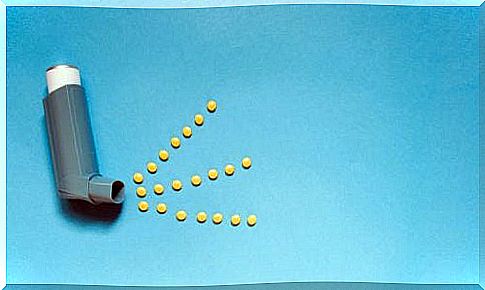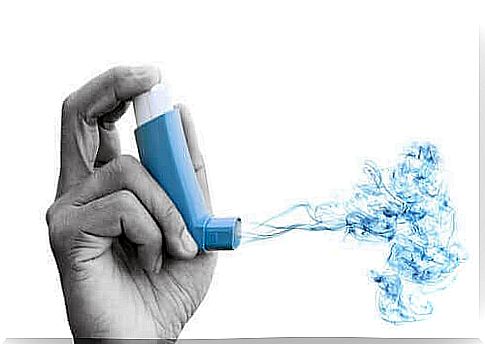Ipratropium Bromide – Properties

Ipratropium bromide is an active substance that belongs to the group of medicines labeled as inhaled anticholinergic bronchodilators. They relax the muscles of the bronchi, facilitate the passage of air and help a person breathe again.
Doctors prescribe this drug for the treatment of bronchospasm associated with chronic obstructive pulmonary disease (COPD). When used in combination with inhaled β2-agonist medicines, doctors also prescribe them for the treatment of acute and chronic asthma.
How does it work?

Ipratropium bromide is a competitive antagonist of muscarinic acetylcholine receptors. It has a powerful effect on bronchial receptors, both given intravenously and by inhalation. However, it does not produce tachycardia. In addition, it reverses bronchoconstriction induced by any inhaled cholinergic agonists.
Also read: Can you control asthma and its symptoms?
Recommended doses of ipratropium bromide
The dose must be adjusted to the individual needs of a patient and they can administer repeated doses until they stabilize. However, only a physician should determine time intervals between doses.
Do not exceed the recommended daily dose, either for acute or persistent treatments. There may be a combination of Ipratropium bromide with short-acting beta-2-adrenergic agonists in the same nebulization chamber.
Use the solution as soon as possible after mixing it and discarding any residue. There are also different types of nebulizers on the market with which this medication is to be administered.
Contraindications and precautions
Ipratropium bromide is not recommended if you are allergic to it or other similar substances, such as atropine or its derivatives. You should also not use it in cases where there is acute cough, wheezing and bronchospasm, which requires a quick response.
You should exercise caution when using anticholinergics in patients with narrow-angle glaucoma, prostate hyperplasia, or bladder obstruction. In addition, you should pay special attention to patients with cystic fibrosis, as they may be more susceptible to diseases of the gastrointestinal tract.
Exceptionally, hypersensitivity reactions have occurred immediately after administration of Ipratropium bromide. These reactions manifest as urticaria, angioedema, rash, bronchospasm, pharyngeal edema and anaphylaxis.
Improper use of Ipratropium bromide spray can penetrate the eyes and can lead to eye complications such as:
- Mydriasis
- Increased intraocular pressure
- Narrow-angled glaucoma
- Eye pain or discomfort
- Blurry vision
How is the Ipratropium bromide inhaler used?
You will need to learn to use this medication properly if you are to undergo treatment. In particular, avoid spraying it in your eyes.
Follow these steps when using it:
- Remove the protective cap
- Take a deep breath
- Squeeze the mouthpiece of the inhaler with your lips
- Inhale as vigorously as possible and press the bottom of the container at the same time to release the solution so you can inhale it
- Hold your breath for a few seconds, then remove the mouthpiece and exhale slowly
- Lastly, replace the protective cap
Its interaction with other drugs

There is some evidence that co-administration of Ipratropium bromide with beta-adrenergic and xanthine derivatives may improve the bronchodilator effect. However, you can use this medicine with other medicines that are often used to treat chronic obstructive pulmonary disease (COPD).
The risk of acute glaucoma in patients with a history of narrow-angle glaucoma may be increased by concomitant administration of nebulized Ipratropium bromide and beta-2-adrenergic agonists.
Also read: 10 signs indicating your lungs are not feeling well
Side effects of Ipratropium bromide
As with all medicines, Ipratropium bromide can cause side effects, although not everybody gets them. However, these do not occur in everyone. The most common side effects are:
- Headache
- Dizziness
- Cough and throat irritation
- Nausea
- Dry mouth
- Diseases of the gastrointestinal tract
Similarly, other rare side effects may occur, such as hypersensitivity, severe allergic reaction, blurred vision, mydriasis, increased internal eye damage and red eyes and pain.
Conclusion on ipratropium bromide
Whether alone or in combination with a beta-adrenergic, Ipratropium bromide has a therapeutic effect in the treatment of bronchospasm. This is especially the case with viral bronchiolitis and bronchopulmonary dysplasia in infants and young children.









